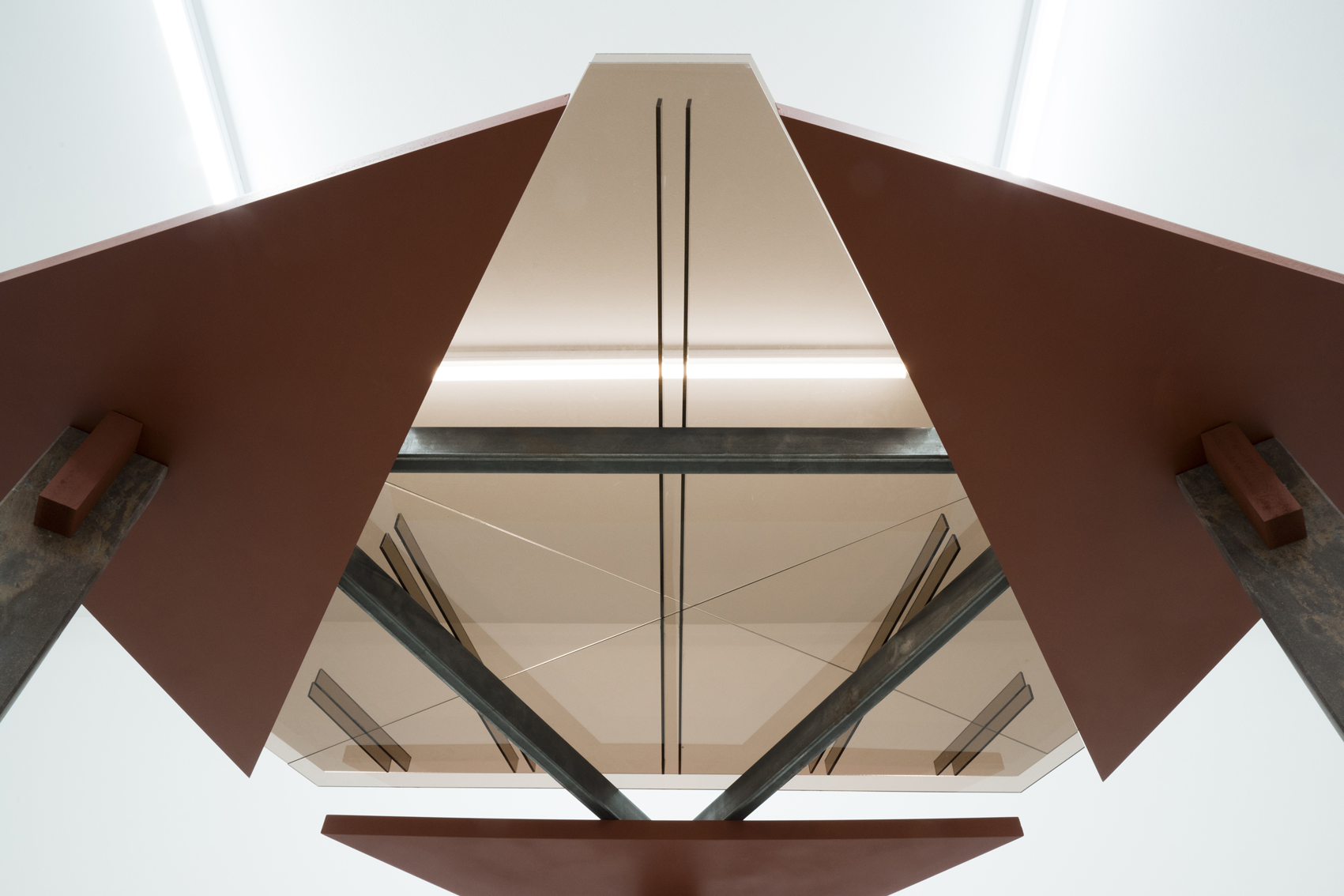Gazebo
(monument for the public-private
space)
(2018)
80 x 80 x 220 cm
marble, timber, steel, acrylic sheet, LED and paint
shown at except for access only, Malta Contemporary Art
(2018)
80 x 80 x 220 cm
marble, timber, steel, acrylic sheet, LED and paint
shown at except for access only, Malta Contemporary Art

KW: This object looks like an
idealised model of a Gazebo, some sort of archetypal or 'reduced form'. Did you
know that gazebos have always existed as either very public or privileged and
private places for meeting and shelter?
JF: Maybe it is a pointed metaphor for the loss of public space? In the wake of the exploding world wide web, private and public spheres have become so intertwined with each other, each mirroring the other, and totally absorbing each other's mode of action and justification.
KW: Is the debate between public and private space therefore still relevant?
JF: I think that personal ecosystems fed by the so-called 'filter-bubble' indeed replaced any urge for shared space. Bring on the slow collapse of social space!
KW: Wow, you are not really making me happy.
JF: Well, then maybe I should point out that whilst we have been building gazebos for thousands of years in a myriad of delicate and inspiring ways, the latest popular addition is a PVC coated polyester, soft top 4-legged pop-up gazebo that allows for instant occupation of what’s left of the public space, with easy-attaching Velcro and quick-release pull pin system.
KW: I love pop-ups!
JF: Maybe it is a pointed metaphor for the loss of public space? In the wake of the exploding world wide web, private and public spheres have become so intertwined with each other, each mirroring the other, and totally absorbing each other's mode of action and justification.
KW: Is the debate between public and private space therefore still relevant?
JF: I think that personal ecosystems fed by the so-called 'filter-bubble' indeed replaced any urge for shared space. Bring on the slow collapse of social space!
KW: Wow, you are not really making me happy.
JF: Well, then maybe I should point out that whilst we have been building gazebos for thousands of years in a myriad of delicate and inspiring ways, the latest popular addition is a PVC coated polyester, soft top 4-legged pop-up gazebo that allows for instant occupation of what’s left of the public space, with easy-attaching Velcro and quick-release pull pin system.
KW: I love pop-ups!




‘Gazebo (monument for the public-private
space)’ questions the loss of public space. Its vaguely ambiguous status,
caused in part by its 1:5 scale is further highlighted by its design – a
reduced and to a certain extent archetypal form of the gazebo.
A search for its etymology yields multiple sources; a Muslim quarter in Algiers, Casbah; Cordoban poet, Ibn Quzman’s use of ‘qushaybah’ and an 18th century architect who added, in jest, the Latin suffix –ebo to the verb ‘gaze’ as if to highlight its function as a point of observation. Notably, few objects divide public and private space more markedly than the gazebo structure, which has always existed in either public or private, privileged spaces. Nowadays cheap and quick to assemble polyester gazebos are in many ways a marker of the times. Van Malderen’s acrylic and marble structure reassesses the value attributed to materiality and skill – pitting these two qualities subtly against the outsourced and the mass consumed.
related works: ERNST (Neufert) I
photo credits: Dustin Gauchi & Alexandra Pace
A search for its etymology yields multiple sources; a Muslim quarter in Algiers, Casbah; Cordoban poet, Ibn Quzman’s use of ‘qushaybah’ and an 18th century architect who added, in jest, the Latin suffix –ebo to the verb ‘gaze’ as if to highlight its function as a point of observation. Notably, few objects divide public and private space more markedly than the gazebo structure, which has always existed in either public or private, privileged spaces. Nowadays cheap and quick to assemble polyester gazebos are in many ways a marker of the times. Van Malderen’s acrylic and marble structure reassesses the value attributed to materiality and skill – pitting these two qualities subtly against the outsourced and the mass consumed.
related works: ERNST (Neufert) I
photo credits: Dustin Gauchi & Alexandra Pace